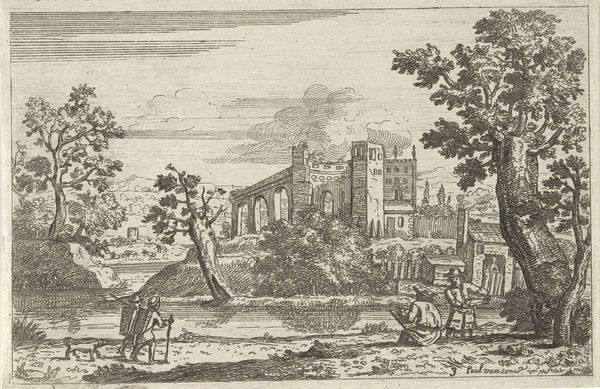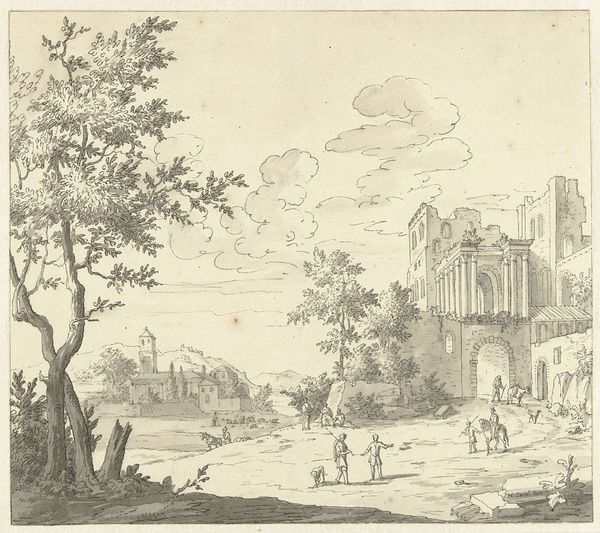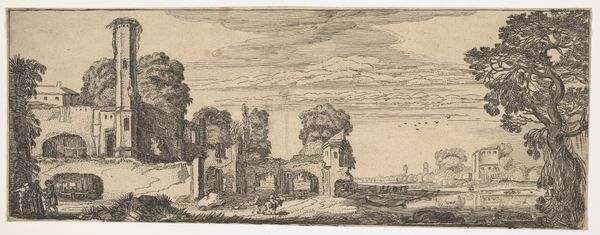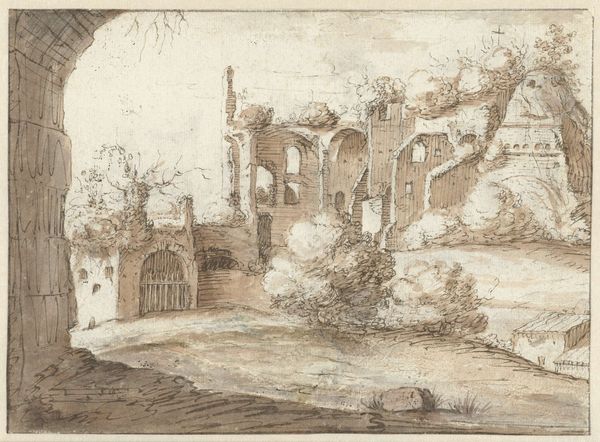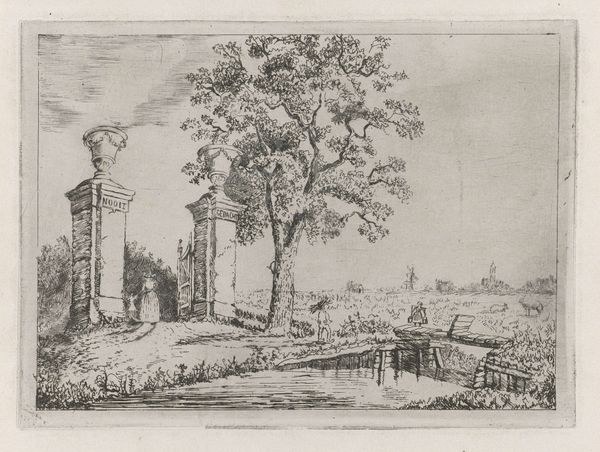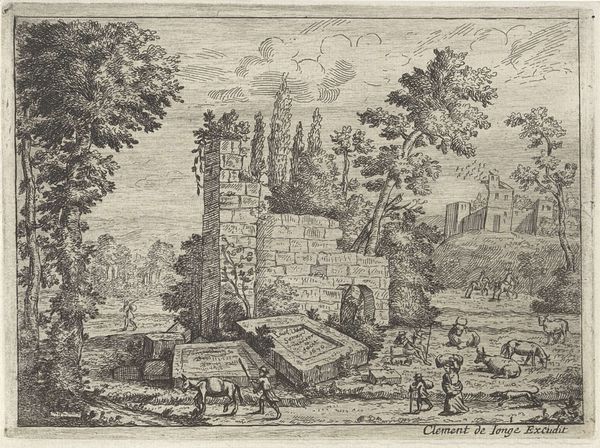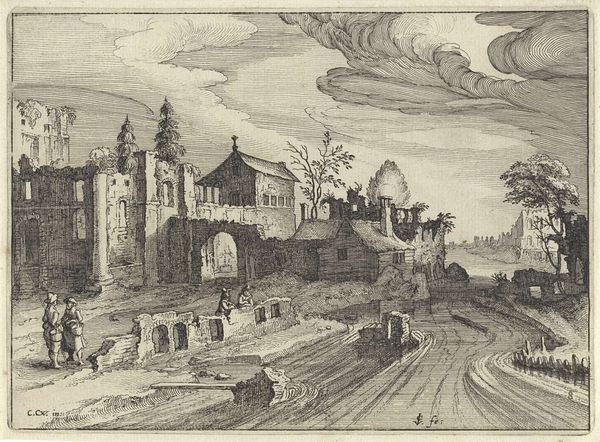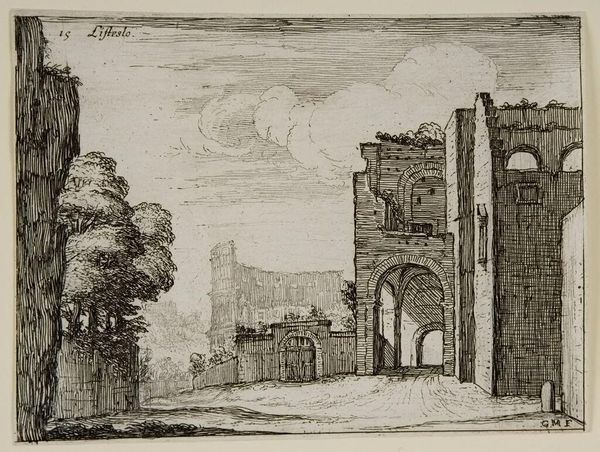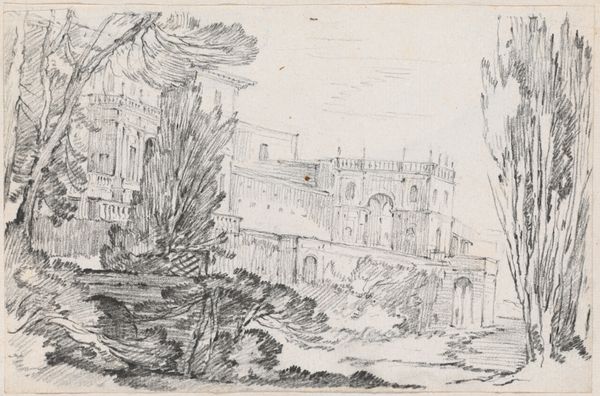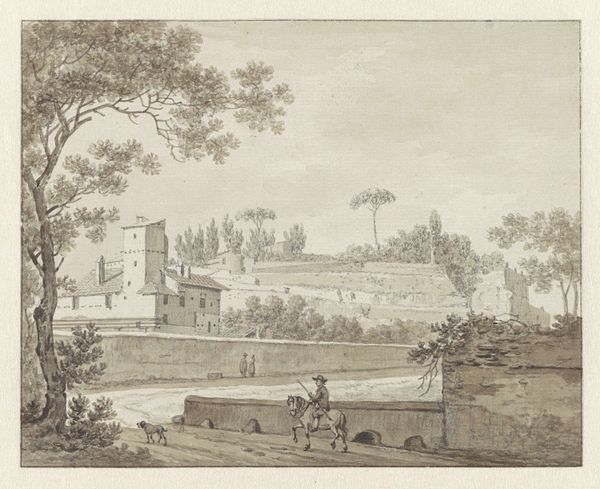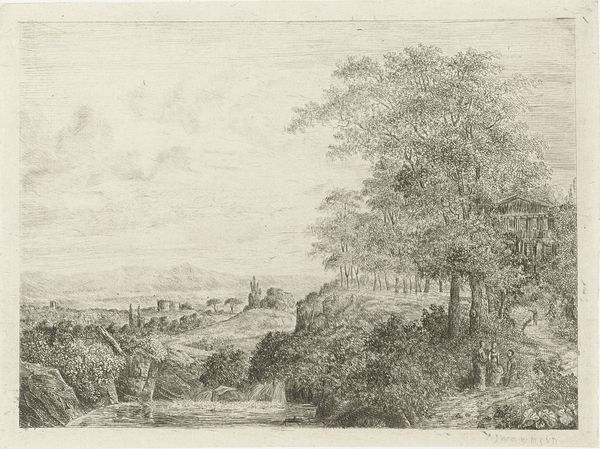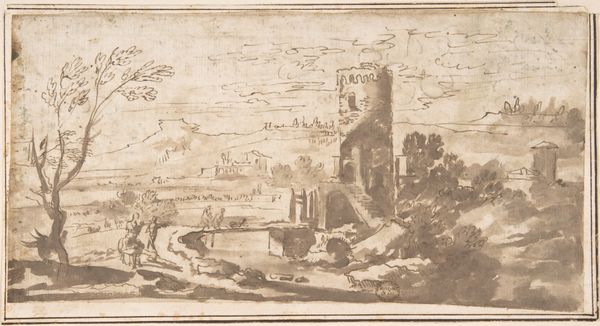
print, etching
#
baroque
# print
#
etching
#
old engraving style
#
landscape
#
cityscape
Dimensions: 175 mm (height) x 276 mm (width) (bladmaal)
Herman van Swanevelt made this print of the ruins of an amphitheater at an unknown date. The image encapsulates a tension between past glory and present decay that was central to the cultural identity of 17th-century Rome. Van Swanevelt was part of a community of Northern European artists living in Rome who were fascinated by the picturesque qualities of its ancient ruins. They frequently sketched outdoors and made prints and paintings for sale to Grand Tourists. Here, the architecture is crumbling and overgrown, yet figures populate the scene, reminding us that the landscape has become part of everyday life. This interest in ruins can be understood in the context of Counter-Reformation Rome, where the Catholic Church sought to assert its authority through grand architectural projects, while also acknowledging the transience of earthly power. Prints like this one offered viewers a way to contemplate these themes, contributing to a discourse of civic pride tinged with melancholy. By consulting period guidebooks and artists' biographies, we can better understand the role of such images in shaping the experience of Rome for both locals and visitors.
Comments
No comments
Be the first to comment and join the conversation on the ultimate creative platform.

